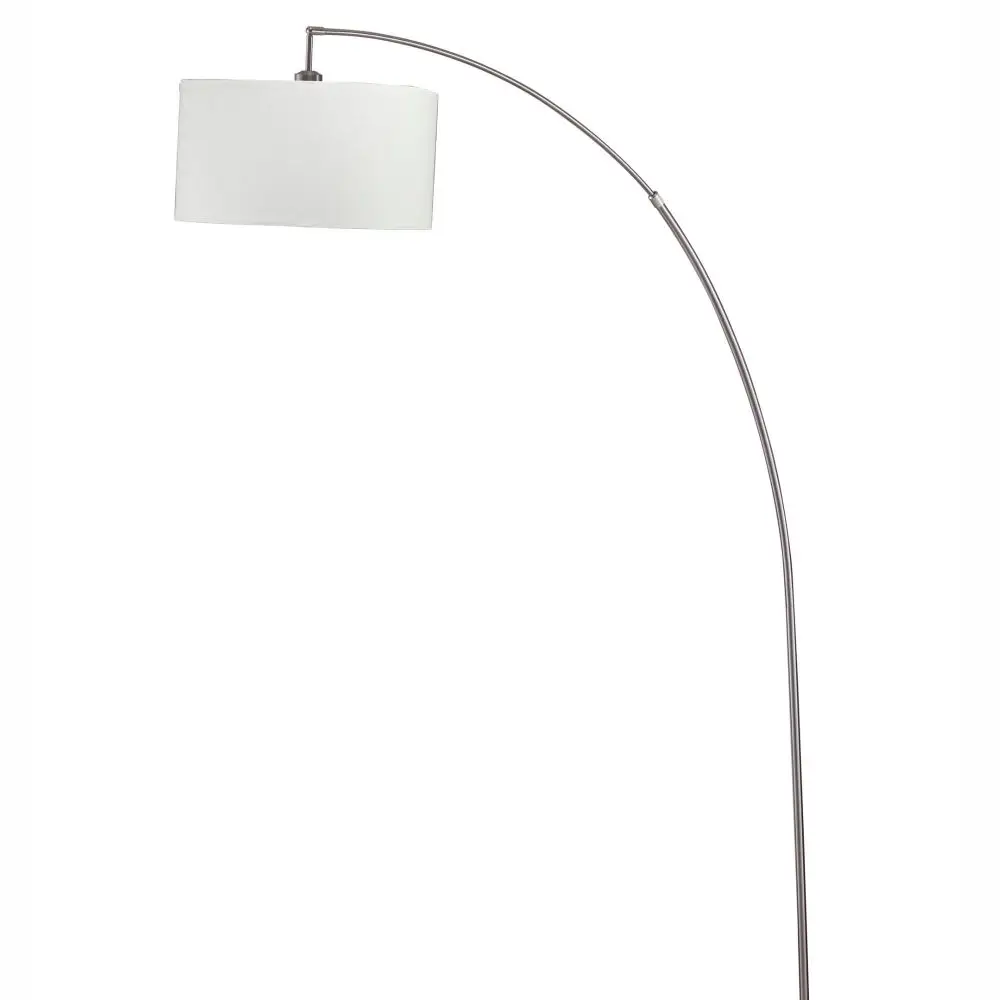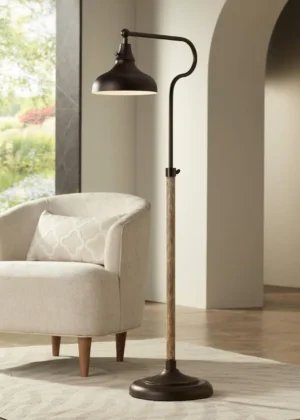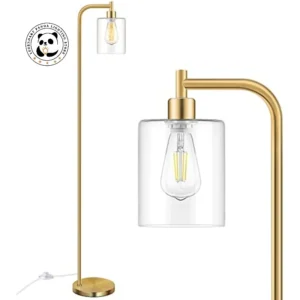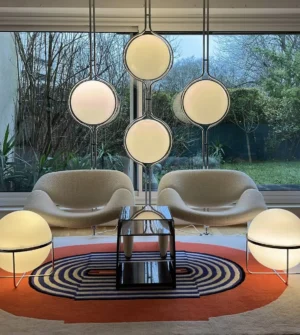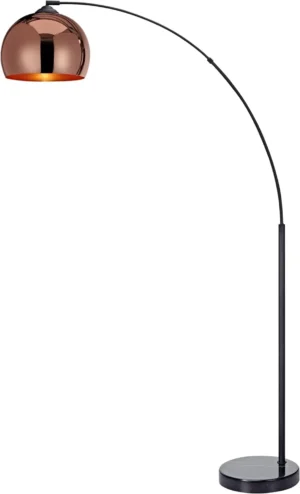Understanding Why Arc Floor Lamps Are Prone to Tipping
Arc floor lamps combine elegance with functionality, but their distinctive arched design creates inherent stability challenges. The curved arm that gracefully extends outward places the heavy lampshade far from the base, creating a high center of gravity. This design naturally makes these lamps more prone to tipping than traditional floor lamps.
Several factors contribute to arc lamp instability:
- Disproportionate weight distribution: The weight of the lampshade sits at the end of a long arm, creating leverage that can overcome the stability of the base
- Relatively narrow bases: Many arc lamps have bases that are aesthetically pleasing but not sized proportionately to their height and reach
- Environmental factors: Everyday situations like uneven floors, high-traffic areas, active pets, or children playing nearby all increase tipping risk
The consequences of a tipping arc lamp go beyond mere inconvenience. A falling lamp can cause injuries, damage expensive flooring or furniture, and even create electrical hazards if wiring is damaged. Understanding the ultimate guide to arc floor lamp base stability is essential for implementing effective solutions that maintain both safety and style in your home.
1. Enhance Your Lamp Base for Maximum Stability
The most effective way to prevent arc lamp tipping starts with the foundation: the base. Since an unstable base is the primary culprit behind tipping incidents, enhancing this component should be your first priority.
When it comes to stabilizing floor lamp bases, both commercial and DIY options can dramatically improve stability. The key principle is increasing the weight at the bottom of the lamp to lower its center of gravity, making it more resistant to tipping forces.
Purpose-Built Lamp Weights and Base Extenders
Commercial solutions offer convenience and often blend seamlessly with your lamp’s design:
- Dedicated lamp weights: These weighted discs are designed to sit beneath your lamp base, adding stability without being visible
- Base extenders: These products increase the footprint of your lamp, providing more surface contact with the floor
- Weighted inserts: Some options can be placed inside hollow lamp bases to add weight without changing the lamp’s appearance
When selecting commercial weights, consider the height and reach of your lamp. Taller lamps with longer arms need proportionally heavier bases. For maximum stability and elegant design, consider exploring marble base arc floor lamps which naturally incorporate substantial weight in their design.
Installation typically involves simply lifting the lamp and sliding the weight underneath, though some products may come with specific instructions for optimal placement.
DIY Weighting Solutions Using Household Items
If you prefer a cost-effective approach, several household items can be repurposed to add weight to your lamp base:
- Sandbags: Small fabric pouches filled with sand can be placed on or around the lamp base
- Pros: Inexpensive, conforms to base shape
Cons: Can be messy if damaged
Decorative stones or rocks: Place in a decorative bowl around the base
- Pros: Adds visual interest while providing function
Cons: May not provide even weight distribution
Exercise weights: Flat weights can be partially hidden under the base
- Pros: Substantial weight in compact form
Cons: May not match home decor
Books or heavy boxes: Place these near or around the base
- Pros: Zero-cost solution using items you already own
- Cons: May look cluttered unless integrated thoughtfully
For the best weighted bases for arc lamps, aim to add enough weight to counterbalance the extended arm. A general rule is that taller lamps with longer reaches need more weight—typically 15-20 pounds for standard-sized arc lamps and up to 30 pounds for extra-large models.
2. Secure Your Arc Lamp Using Anchoring Techniques
While weighted bases provide significant stability improvements, anchoring your lamp offers another layer of security, especially in homes with pets, children, or high-traffic areas.
Wall and Floor Anchoring Systems
Professional anchoring provides maximum security for arc lamps:
- Furniture straps: These connect your lamp to the wall using strong nylon straps, similar to those used to secure bookshelves
- L-brackets: Small metal brackets can secure the lamp base to the floor in less visible areas
- Tension rods: These can be installed between the ceiling and the top of the lamp arc for additional support
When selecting an anchor system, consider:
– Weight capacity: Ensure it’s rated for your lamp’s weight
– Installation requirements: Some systems require drilling while others don’t
– Visibility: Choose options that blend with your decor
For detailed guidance on implementation, exploring how to secure tall floor lamps can provide specific techniques tailored to different lamp styles and home environments.
Non-Permanent Adhesive Solutions
If you prefer not to drill into walls or floors, consider these non-permanent options:
- Museum putty/gel: This removable adhesive secures the base to the floor
- Application: Apply small amounts to the bottom of the lamp base and press firmly onto the floor
Removal: Gently twist to break the bond; residue typically wipes away easily
Heavy-duty adhesive strips: Double-sided removable mounting strips can secure the base
- Application: Attach strips to base and floor following package directions
Removal: Stretch strips parallel to the surface for clean removal
Non-slip mats: Rubber or silicone mats create friction between the lamp and floor
- Application: Simply place under the lamp base
- Removal: Lift away with no residue
These solutions work best when combined with proper weighting techniques for comprehensive stability.
3. Strategic Placement and Environmental Adjustments
Where and how you position your arc lamp significantly impacts its stability. Strategic placement requires minimal effort but offers substantial benefits in preventing tipping.
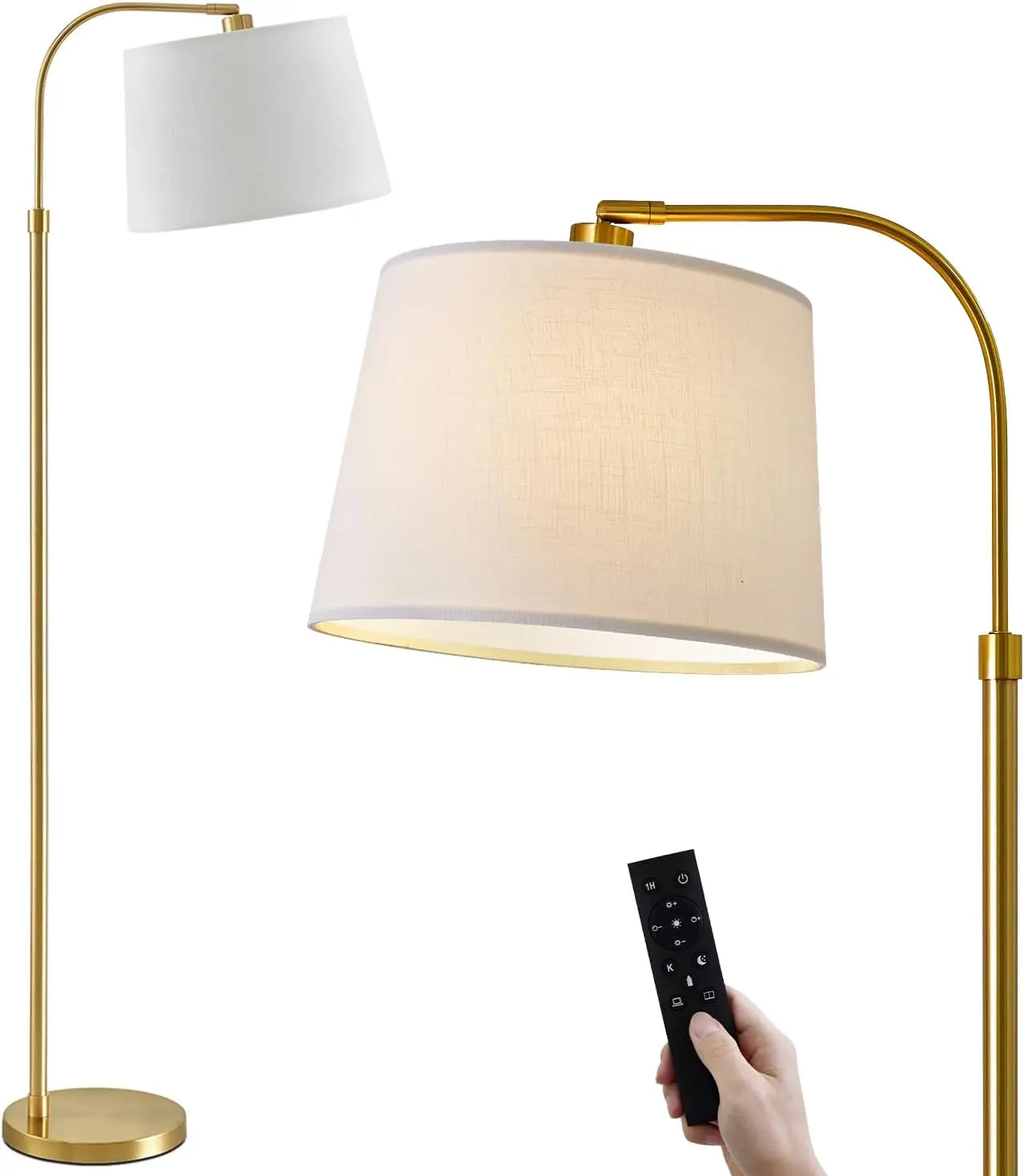
Integrating Your Arc Lamp with Existing Furniture
Thoughtful placement can naturally enhance lamp stability:
- Position the lamp behind heavier furniture like sofas or cabinets, with the arc extending over the seating area
- Place the base against a wall with the arc extending inward toward the room
- Create a furniture arrangement that naturally protects the lamp from bumps and jostling
- Consider how your discreet arc lamp wiring solutions integrate with your furniture placement to avoid creating tripping hazards
The ideal placement creates a natural barrier between the lamp and foot traffic while maintaining the lamp’s functionality and aesthetic contribution to your space.
Optimizing Floor Surfaces for Arc Lamp Stability
The surface beneath your lamp significantly impacts stability:
- Uneven floors: Use felt furniture pads or thin shims to level the base
- Carpeted surfaces: Place a small, rigid board under the base to create a firm foundation
- Slippery floors: Add non-slip pads to prevent sliding movement
- Multi-surface transitions: Avoid placing lamps where flooring changes from one material to another
For spaces with particularly challenging floors, consider adjustable arc floor lamps that allow you to adapt the lamp’s position to accommodate surface irregularities.
Adjustable Arc Floor Lamp, Bronze Arc Floor Lamp
Price range: $440.95 through $558.52 Select options This product has multiple variants. The options may be chosen on the product pageBrass Arc Floor Lamp, Contemporary Arc Floor Lamp, LED Arc Floor Lamp
Price range: $490.72 through $522.04 Select options This product has multiple variants. The options may be chosen on the product pageChrome Arc Floor Lamp, LED Arc Floor Lamp
Price range: $304.95 through $1,210.40 Select options This product has multiple variants. The options may be chosen on the product pageContemporary Arc Floor Lamp, Large Arc Floor Lamp, Marble Base Arc Floor Lamp
$224.94 Select options This product has multiple variants. The options may be chosen on the product pageLED Arc Floor Lamp, Rattan Arc Floor Lamp
$313.58 Select options This product has multiple variants. The options may be chosen on the product page- $1,003.85 Select options This product has multiple variants. The options may be chosen on the product page
4. Maintenance and Structural Reinforcement
Regular maintenance plays a crucial role in preventing arc lamp tipping. Over time, components can loosen, leading to structural weakness and increased instability.
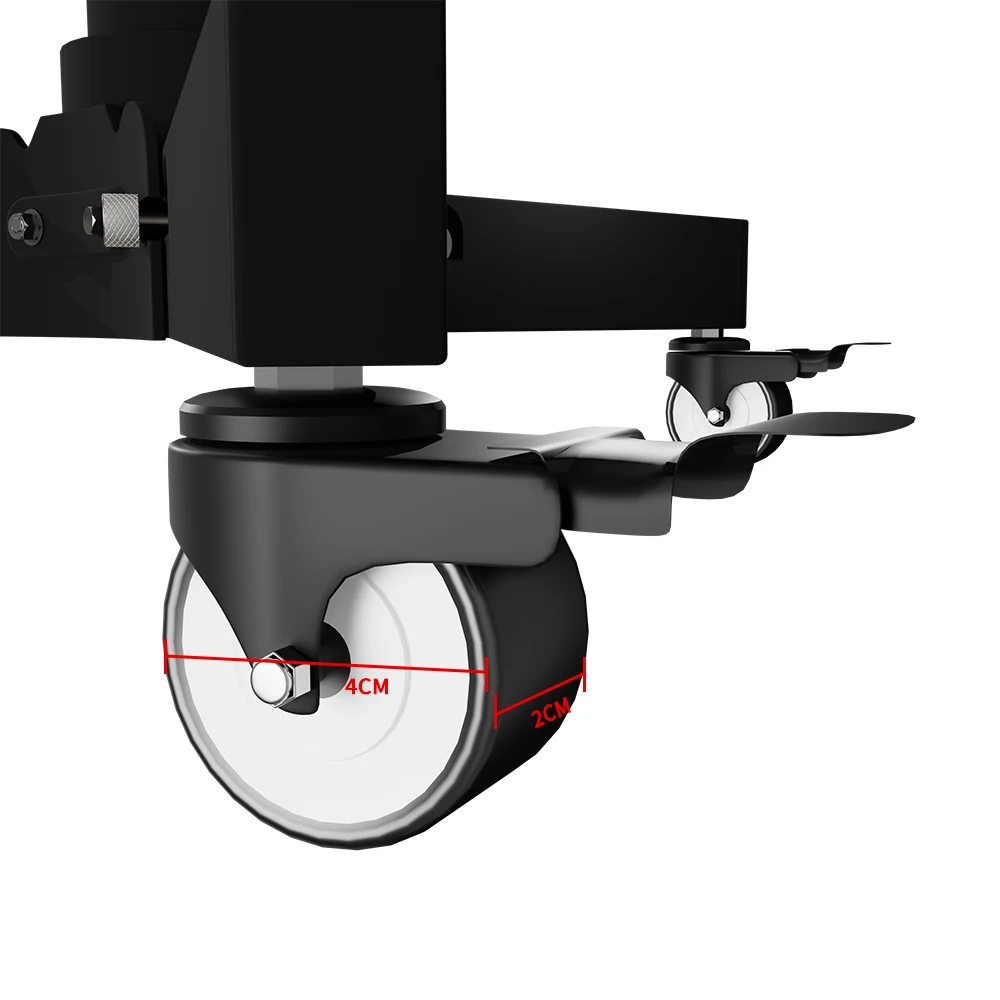
Tightening and Reinforcing Lamp Components
A monthly maintenance routine can identify and address potential stability issues:
- Check all connection points where lamp segments join together
- Tighten any loose screws or bolts (using the appropriate tools)
- Inspect the base for signs of damage or wear
- Test the lamp’s stability by gently pushing from different angles
For lamps with persistent issues, understanding common issues in arc lamp setup can help identify the root cause of stability problems.
Warning signs that require immediate attention include:
– Visible gaps between connected parts
– Unusual movement or swaying when lightly touched
– Creaking sounds when the lamp is adjusted
– Base separation or cracking
Effective Cord Management for Safety and Stability
Proper cord management not only improves appearance but also prevents tripping hazards that could cause lamp tipping:
- Route cords along walls rather than across open floor spaces
- Use cord covers that match your flooring for cords that must cross walkways
- Consider cord clips to secure excess cord length to baseboards
- Keep cords away from high-traffic areas
For arc lamps with longer cords, coil excess length neatly and secure it with a twist tie or cord management product near the base of the lamp.
5. Selecting Inherently Stable Arc Floor Lamps
If you’re in the market for a new arc lamp, choosing one with built-in stability features can prevent tipping issues from the start.
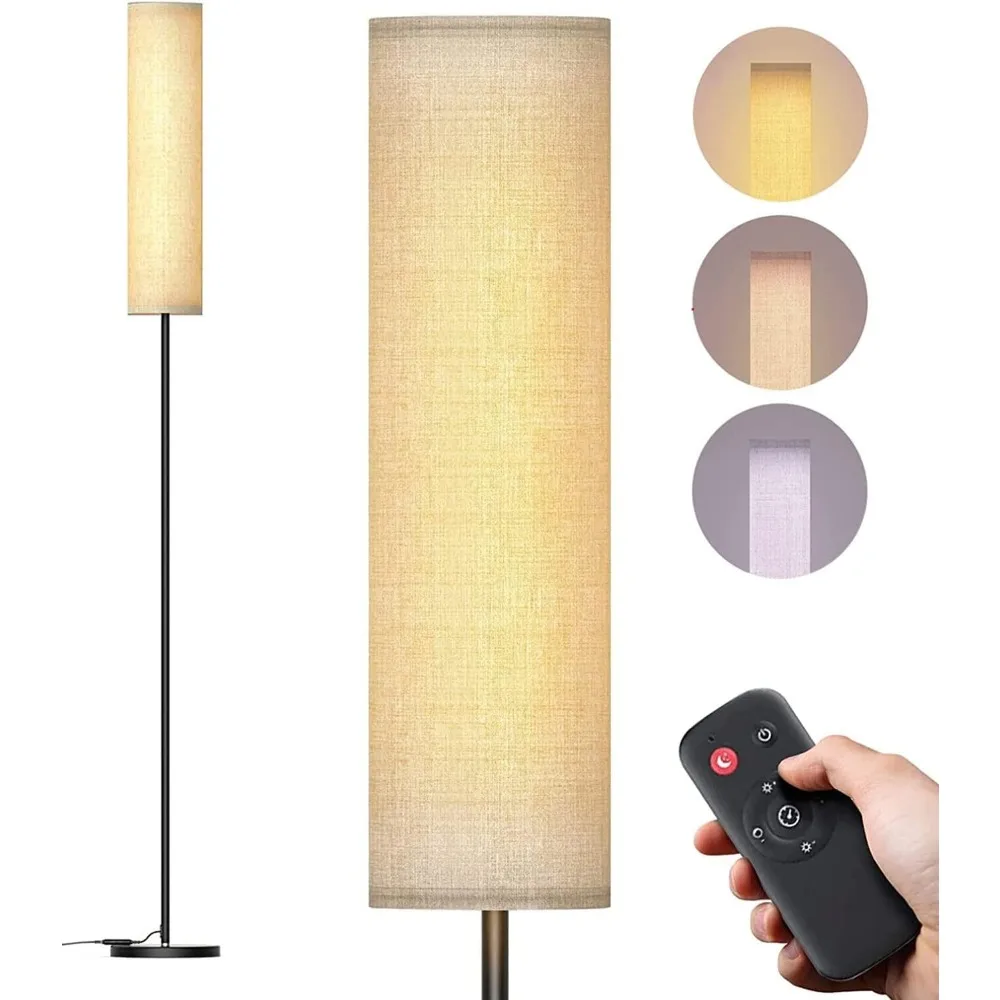
Design Features That Enhance Arc Lamp Stability
When shopping for arc lamps, look for these stability-enhancing features:
- Wide, heavy bases: Bases should be proportional to the lamp’s height and reach
- Low center of gravity: Models with counterweights in the base offer superior stability
- Shorter reach: Lamps with less dramatic arcs place less strain on the base
- Adjustable components: Flexible arms allow you to customize the reach and balance
Modern LED arc floor lamps often incorporate these stability features while offering energy efficiency and advanced lighting options.
For comprehensive information about what makes a lamp base stable, exploring different stable base designs for arc floor lamps can help you make informed purchasing decisions.
Material and Construction Quality Indicators
The materials used in an arc lamp significantly impact its stability:
- Marble and stone bases: Provide natural weight and stability
- Solid metal construction: More stable than hollow or plastic components
- Quality joints and connections: Look for reinforced connection points between lamp segments
- Weighted bottom designs: Some lamps feature internal weights strategically placed in the base
When comparing options, lift the lamp (if possible) to assess its weight distribution. A well-designed arc lamp will feel substantially heavier at the base than at the arched section.
Can Arc Floor Lamps Be Child and Pet-Proofed?
Homes with children and pets present special challenges for arc lamp stability. While no solution is foolproof, these additional precautions can help:
- Consider shorter arc lamps that have less distance between the base and shade
- Create “no-go zones” around lamps using furniture placement
- Use multiple stability methods simultaneously (weights plus anchoring)
- Consider motion-activated lighting as an alternative in particularly active spaces
Additional techniques for keeping floor lamps from leaning can be adapted for homes with active children or pets.
How Do Different Arc Lamp Styles Affect Stability Solutions?
Different arc lamp designs require tailored stability approaches:
- Oversized statement lamps: Need proportionally larger weights and potentially wall anchoring
- Minimalist designs: Often benefit from hidden weights inside hollow bases
- Multi-arm arc lamps: Require careful balance assessment as weight distribution changes with arm positioning
- Vintage-style arc lamps: May need internal reinforcement due to older design principles
For versatility in different spaces, dimmable arc floor lamps often feature modern design elements that incorporate better stability while adding lighting flexibility.
What Emergency Measures Can Prevent a Tipping Arc Lamp?
If you notice your arc lamp becoming unstable and don’t have time for permanent solutions:
- Temporarily move the lamp to a corner where two walls can provide support
- Place heavy books or objects around the base as an immediate counterweight
- Reduce extension of adjustable arms to bring the lamp shade closer to the base
- If the lamp seems severely unstable, consider temporarily replacing it with an alternate light source until proper solutions can be implemented
When implementing emergency measures, always prioritize electrical safety by ensuring cords remain undamaged and connections secure.
With these proven strategies, your beautiful arc floor lamp can remain both a stylish design element and a safe, stable lighting solution in your home. By understanding the physics behind lamp stability and implementing appropriate preventative measures, you can enjoy your arc lamp without worry.

